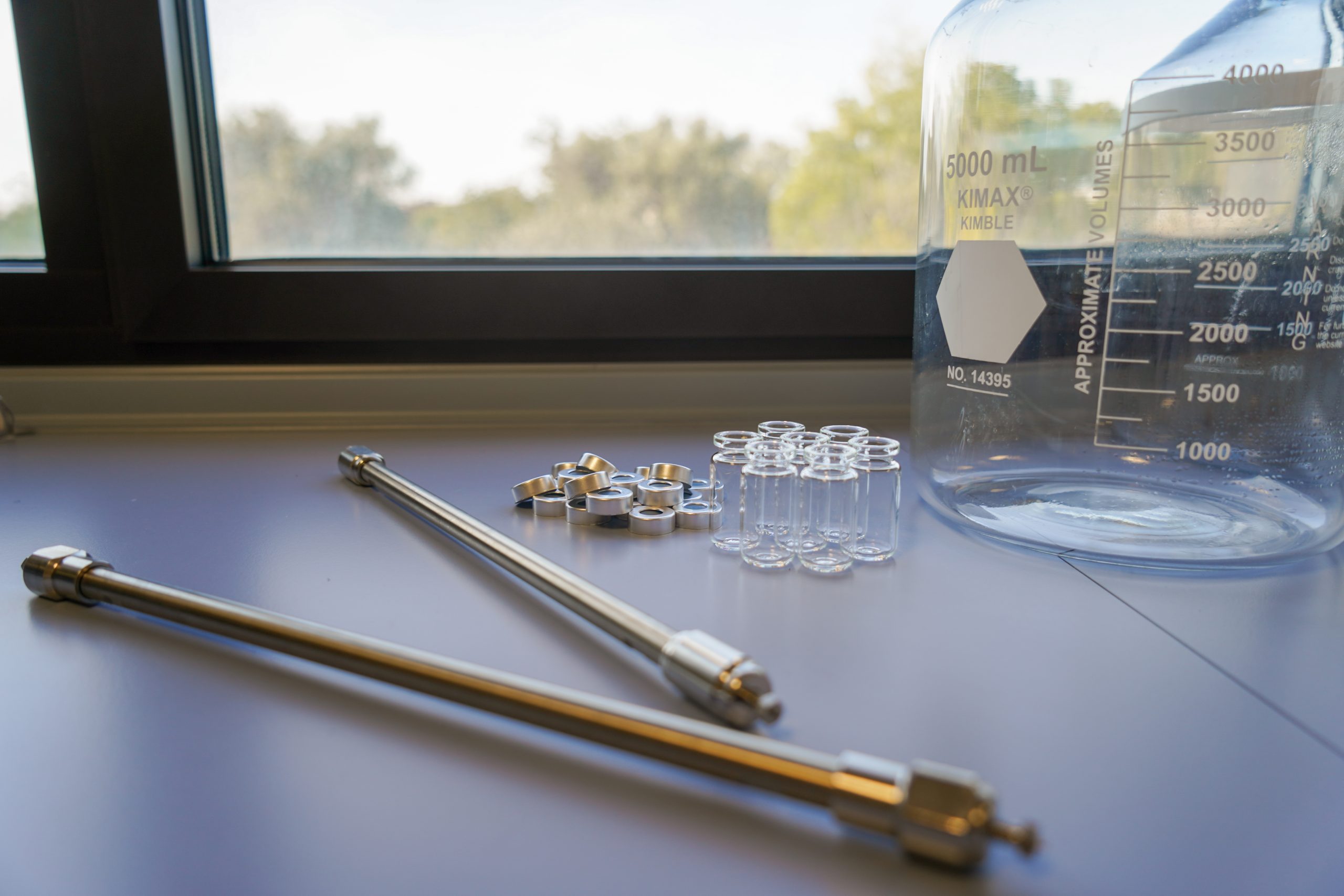Practical considerations in Gel Permeation Chromatography analysis of polyolefins
- February, 15 2021
- Category: GPC/SEC

This guide covers some practical considerations regarding solvent, analysis conditions, and laboratory supplies needed for analyzing polyolefins by Gel Permeation Chromatography (GPC) or Size Exclusion Chromatography (SEC) technique.
The data and recommendations presented here have been derived from the day-to-day operation of the GPC-IR and GPC-QC instruments in Polymer Char’s laboratory.
Solvent Consumption and Analysis Time
In Gel Permeation Chromatography, solvent consumption and analysis time depend mainly on the vial size, the number and type of columns, and the number of detectors used.
The typical configuration in a GPC-IR system has 3 standard GPC columns and 10mL vials, whilst the GPC-QC usually has 1 rapid GPC column and 100mL vials.
The tables below show how these different vial, column, and detector configurations result in different analysis times and amounts of solvent used per run.
| GPC-IR (3 standard GPC columns, 10mL vials) | Infrared (IR) | IR + Viscometer |
|---|---|---|
| Solvent consumption* | 60mL | 80mL |
| Analysis time | 35 min | 55 min |
| GPC-QC (1 rapid GPC column, 100mL vials) | Infrared (IR) | IR + Viscometer |
|---|---|---|
| Solvent consumption* | 80mL | 90mL |
| Analysis time | 15 min | 24 min |
*Total solvent consumption (including dissolution, injection, and cleansing volumes)
For information on which GPC detectors to use for each type of sample, we have created this guide on how to choose the most appropriate combination of detectors for high temperature SEC/GPC analysis of polyolefins.
Concentration and Dissolution Time according to each type of sample
The sample concentration and dissolution time needed for a GPC analysis will depend on the samples to be analyzed. Complex samples need more dissolution time and sometimes a higher temperature to fully dissolve. They also require a lower concentration as they can easily obstruct hardware components (lines, columns, etc.)
Achieving an optimum sample concentration is important to be able to get a good signal from the detector whilst avoiding obstructions.
Dissolving the sample at high temperature for a long period of time can lead to sample degradation, so it is also important to reach an optimum dissolution time that is long enough to dissolve the sample completely, but not so long that it starts to degrade it.
Here are our recommendations for some samples typically analyzed by high-temperature SEC/GPC:
| Sample Type | Concentration | Dissolution Time | Dissolution Temperature |
|---|---|---|---|
| PS | 0.2 – 1 – 2 mg/mL1 | 2 – 20 min2 | 160ºC |
| LLDPE, LDPE | 2 mg/mL | 60 – 90 min | 160ºC |
| HDPE | 0.5 – 1 mg/mL | 90 – 120 min | 160ºC |
| UHMWPE | 0.1 – 0.2 mg/mL | 120 – 180 min | 160ºC |
| PP | 1 mg/mL | 90 min | 160ºC |
1 Sample concentration needs to be adapted according to the Molecular Weight (MW) of each Polystyrene (PS). Use the lowest concentration for the PS with highest MW.
2 For raw PS, 20 min. For PS mixtures (ready for calibration) 2-5 min dissolution time is enough. A longer dissolution time could degrade the PS.
Laboratory supplies and consumable parts
| Supplies | GPC-IR3 | GPC-QC4 |
|---|---|---|
| GPC Columns | Minimum: 2 Recommended: 3 Maximum: 4 | Recommended: 1 Maximum: 3
|
| GPC Column Lifespan | 1 year (or up to 2 years when using a guard column) | 6 months |
| GPC Column Type | Pore size: mixed Particle size: 13µm ID: 7.5 mm Length: 300mm | Pore size: mixed Particle size: 20µm ID: 10mm Length: 250mm |
| Guard Column | Recommended: 1 | – |
| Guard Column Lifespan | 4-6 months | – |
| Guard Column Type | Same particle size as standard GPC column | – |
| Vials | 10mL, disposable | 100mL, reusable |
| Solvent Quantity | 100-150L/year 5 | 25-50L/year 6 |
| Solvent Type and Quality | TCB, oDCB Assay: Minimum 99%. New solvent must be filtered with a membrane of 0.45µm. Recycled solvent is ok. | |
3Applicable to most polyolefins, including PS mixtures. For UHMW polyolefins, please ask Polymer Char for more information regarding columns and analytical conditions.
4All polyolefins can be analyzed with GPC-QC, but columns and instrument have been optimized for the analysis of UHMW.
5 For a minimum of 1500 samples/year with IR and Viscometer detectors.
6 For a minimum of 250 samples/year with IR and Viscometer detectors.
These are Polymer Char recommendations for general practice in GPC/SEC analysis. There might be other configurations and analytical conditions that can also be used. For more information, please check with us.
2 Comments
Nice overview.
Can I get a PDF file of this publication?
Thank you for your comments. This work was prepared for this Blog only, but it can be easily printed out on a pdf file (please use Landscape layout for getting all the tables properly included). We can send it to you by email if you prefer, just let us know, thank you!